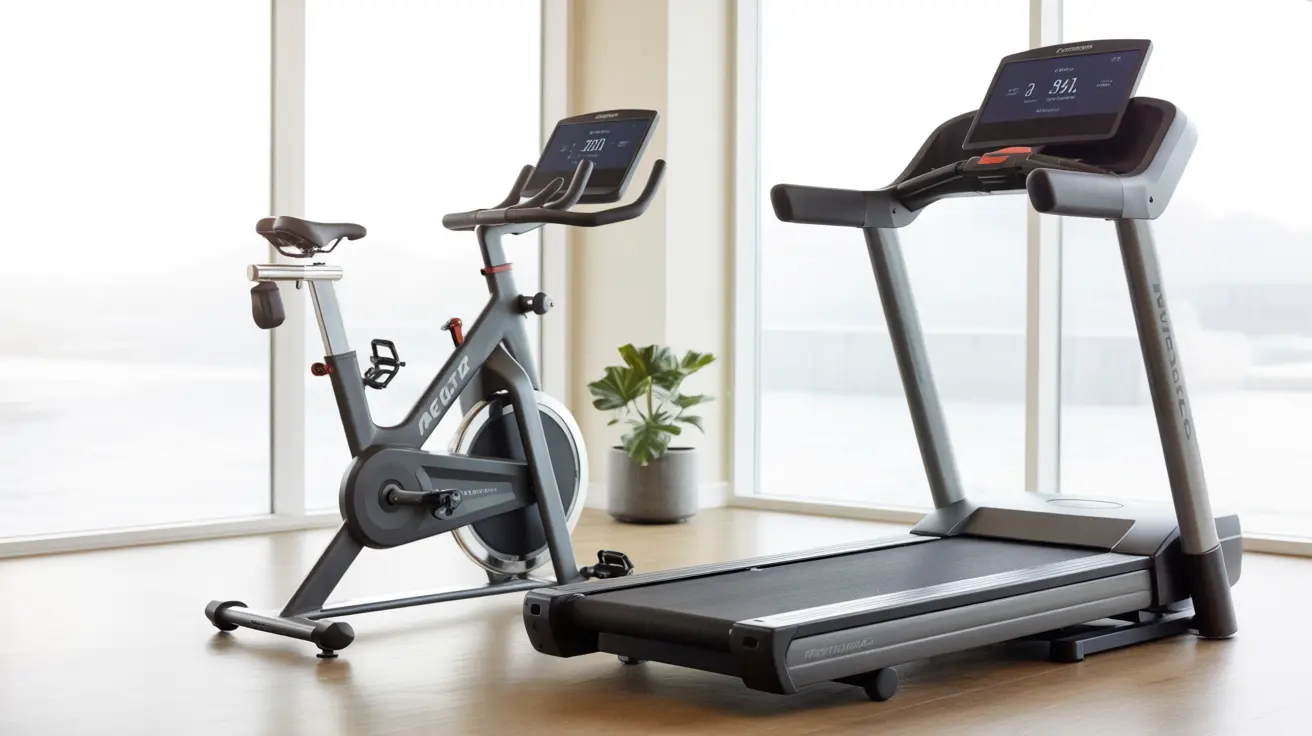Choosing between a stationary bike and a treadmill for your home gym or workout routine is a significant decision that can impact your fitness journey. Both machines offer excellent cardiovascular benefits, but they each have unique advantages that might make one a better choice for your specific needs.
In this comprehensive guide, we'll explore the key differences between these popular pieces of exercise equipment, helping you make an informed decision based on factors like calorie burn, joint impact, muscle engagement, and practical considerations.
Calorie Burning and Weight Loss Potential
When it comes to calorie burning, both machines can provide effective workouts, but their impact varies. Treadmills typically offer a higher calorie burn per hour for most people, as running engages more muscle groups and requires more energy expenditure than cycling.
However, the actual calories burned depend significantly on factors such as:
- Workout intensity
- Duration of exercise
- Individual body weight
- Resistance or incline settings
- Personal fitness level
Impact on Joints and Body
The impact level on your joints is one of the most significant differences between these two machines. Stationary bikes provide a low-impact workout that's gentler on your joints, particularly your knees, ankles, and hips. This makes them an excellent choice for people with joint issues or those recovering from injuries.
Treadmills, while excellent for building bone density and overall strength, create more impact during use, especially when running. This higher impact can be beneficial for some but potentially problematic for others with joint sensitivity.
Muscle Engagement Patterns
Stationary Bike Focus Areas
Stationary bikes primarily target:
- Quadriceps
- Hamstrings
- Calves
- Glutes
- Core (when maintaining proper form)
Treadmill Focus Areas
Treadmills engage:
- Full lower body
- Core muscles
- Upper body (especially when running)
- Back muscles
- Hip flexors
Space and Practical Considerations
Before making your choice, consider the practical aspects of each machine. Stationary bikes typically have a smaller footprint, making them ideal for apartments or limited spaces. They're also generally quieter, which can be important for those living in shared spaces or apartments.
Treadmills usually require more space and tend to be louder during operation. They also often need more maintenance and typically consume more electricity than stationary bikes.
Frequently Asked Questions
What are the main differences in calorie burn between a stationary bike and a treadmill?
A treadmill typically burns more calories per hour compared to a stationary bike, especially during running. However, the actual calorie burn depends on workout intensity, duration, and individual factors. High-intensity cycling can match or exceed walking on a treadmill for calorie burn.
Which is better for people with joint pain or injuries: a stationary bike or a treadmill?
A stationary bike is generally better for people with joint pain or injuries because it provides a low-impact workout. The seated position reduces stress on joints while still allowing for an effective cardiovascular workout. Treadmills create more impact, especially during running, which may aggravate existing joint issues.
How do muscle engagement and workout intensity compare between using a treadmill and a stationary bike?
Treadmills typically engage more muscle groups simultaneously, especially during running. Stationary bikes focus more intensively on lower body muscles, particularly the quadriceps and hamstrings. Both machines allow for varied intensity through speed, resistance, or incline adjustments.
Can a stationary bike or treadmill help more effectively with weight loss and fat burning?
Both machines can be effective for weight loss when used consistently with proper intensity. Treadmills may offer slightly higher calorie burn potential, but stationary bikes allow for longer workout sessions due to lower fatigue and impact, which can lead to sustained weight loss results.
What are the space and noise considerations when choosing between a treadmill and a stationary bike for home exercise?
Stationary bikes generally require less space and operate more quietly than treadmills. A typical bike needs about half the floor space of a treadmill and produces significantly less noise during use. Treadmills need more room for safety and tend to create more noise from both the motor and impact.




